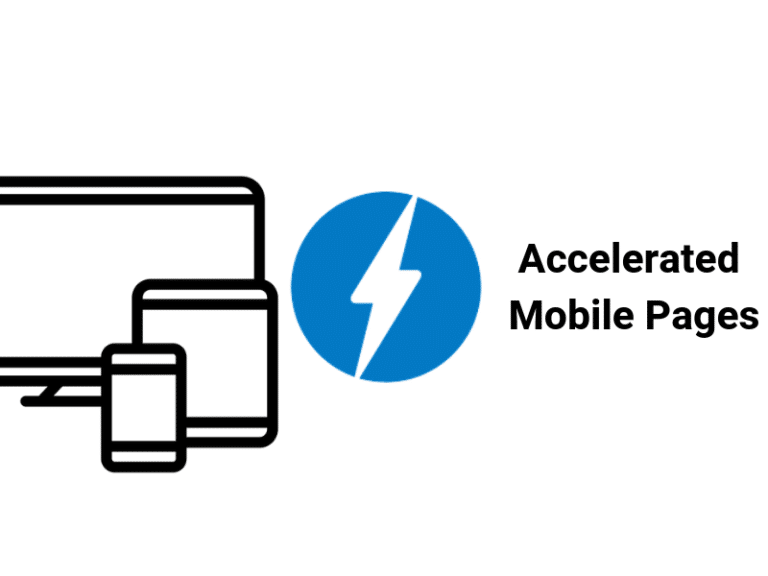Basics and Advantages of Accelerated Mobile Pages

-
Ankit Patel
- March 16, 2019
- 4 min read
Gone are the days when a desktop or a laptop served the purpose of internet surfing. With internet connectivity on every mobile device, the number of searches made from it has overtaken that from a desktop. But what trouble the people are the slow loading pages. Moreover, some countries haven’t moved beyond 2G. So with a slow internet speed coupled with a slower loading mobile page, the visitors are sure to abandon their page visit long before even 10% of it gets loaded. The Accelerated Mobile Pages (AMPs) was created in order to address this problem on mobile devices. The issue of slow load time that was raised persistently by publishers and enterprises, at last, found an answer with the AMPs.
– What is Accelerated Mobile Pages?
The Accelerated Mobile Pages (AMPs) is the open source Google-sponsored framework that helps in faster load time. The main aim was to enable the publishers to improve their page loading speed and at the same time not compromise on the ad revenues that they were earning.
– Problems faced by the publishers due to slow loading pages
Many of the news and magazine publications earn their money through the ads placed on their sites. In fact, this is the main source of income for them to sustain their free online publishing. But the problem with the ads was that they decreased the loading speed of their sites. Moreover, people started using the ad blockers so that their mobiles could load any page with speed without the ads. This meant that the publications got no response to the placed ads. To overcome this, Google came up with the accelerated mobile pages that helped the publications load the page faster even with the ads on them. This not only earned them revenues but also got the visitors back to their sites.
– AMP Source Code
The main characteristics of an AMP are the toned down CSS elements and JavaScript and the use of Content Delivery Network (CDN).
- AMP HTML-
Here, many restrictions are placed on the use of codes in the CSS and HTML. For example- theand thetags are a must in AMP. You also have to include a Schema.org definition in the head if your page is to be listed in the Google Search Top Stories carousel. Also, the header has to have a script tag to include the AMP JavaScript library. In AMP, only the inline styles are allowed for CSS. The inline stylesheet has to be of maximum 50kB. The fonts have to be optimized so that the performance gets better.
- AMP JS-
JavaScript is that computer language that is used to include interactive elements on the web and mobile pages. But with the AMP JavaScript, there are some restrictions. The third-party JavaScript and the author-written JS are not allowed. AMP allows only asynchronous JavaScript. Even the JavaScript analytics packages are not allowed. There should not be any JavaScript ads. The Google AMP loads an iframe and executes the ad inside a JavaScript inside the iframe sandbox.
- AMP CDN-
The content delivery network helps get the AMP website stored in the cache to the user’s mobile. The cache is stored on various servers and is brought on to the mobile through the shortest delivery path. Another benefit of CDN is the continuous checking of the page to avoid errors.
The AMP cache is a proxy-based CDN that delivers valid documents. The AMP cache allows the stored pages to be loaded safely and effectively. It ensures that only the valid AMP is loaded. It also performs content-optimization so that the users do not miss out on any engaging content and in the meanwhile, the loading speed of the page is increased. When you design your webpage in an AMP format, the content is made available to the AMP Caches. Your AMP page can be discovered when-
- You insert thetag. The Google Search crawls and identifies the valid AMP pages for the content to be added to the Google AMP Cache
- When the platforms use the AMP Cache URL format to request access to the AMP page. This is then added to the platform’s cache.
- When the publishers add the Amp page to Google AMP Cache.
– Advantages of Accelerated Mobile Pages
Of course, where there is slow network connectivity, AMP cannot change the network speed, but it can change the loading time. AMP creates conditions wherein the mobile page gets loaded fast. As mentioned above, this is done by purring restrictions and limitations to the JavaScript and CSS elements. In fact, it can be said as one of the page-optimization techniques for faster loading speed. AMP stores only a few resources in its cache in order for the page to be viewed.
Thus, the speed is achieved by two processes-
- Reduction in files that have to be loaded.
- The target page is kept ready in the cache for immediate viewing for transmission through a Content Delivery Network.
– Effects of fast loading speeds in AMP
Now let us see what the important after-effects are of a faster loading speed of the mobile page-
- Improved ranking-
It is a known fact that speed is one of the important considerations for a search engine if a web page is to rank high in its search engine results page. What an AMP does is that it basically increases the loading speed, which in turn improves the chances of the mobile page getting indexed higher in the search engine results.
- Improved Ad revenue-
With a faster loading speed, the publications can now not worry much about the ad placement on their mobile page. The AMP ensures that the pages containing content with the ads load fast without causing inconvenience to the user.
- Increased visitors-
With faster loading pages, the publications can now be assured of more visitors to their mobile websites. The reach of their website also gets wider even in countries where the 2G connection is the norm. This will be a big boost to regional publications and news houses since they can rank high for the local and regional news and expect increased reader interactions.
- Stakeholder benefits-
All in all, the AMP is beneficial to the advertisers, publishers, and the users. The advertising content in an AMP loads asynchronously that does not disturb the user experience when loading. This helps the advertisers to use AMP in different advertising formats. The publishers gain from the ad placements. They also gain from the mobile-optimized websites by getting increased visitors. The users benefit from the fact that AMP loads fast even on a slow internet connection.
Conclusion:
AMP is your solution if you are keen that visitors read your content. The AMP loads the pages faster and is a good boost for your website it is concentrated solely on news publication, articles, and blogs. If your website sells products and publications, then AMP will not be a necessity since there are restrictions on the images, videos and the styling of the layout. So there you go, depending on your business needs, you can opt to go for AMP or not.
You may also like

How Courier Delivery Apps Can Revolutionize Your Business Operations
-
Ankit Patel
In the fast-paced world of today, the gears of business operations never really stop moving. Are you a seasoned logistics and transportation business giant? Or a burgeoning startup hoping to transform the delivery landscape? Or an enterprise managing a complex web of shipments? No matter where you stand, the pressure to deliver quickly, efficiently, and… Read More

Super App Development Guide: All-in-one Food, Grocery & Taxi App Solution
-
Chirag Vaghasiya
In today’s digital world, which is overflowing with applications that take up storage space on mobile phones and have only one function, a new precedent is beginning to emerge Let’s think about it, an application that serves multiple purposes at a time. Yes, an application fulfills all the day-to-day necessities of a regular user! A… Read More

Grocery Delivery App Development: A Guide for Supermarkets & Local Stores
-
Ankit Patel
Grocery shopping apps are a blessing for online grocery shoppers! In an era where everything comes in handy, grocery shopping apps have grown to be an essential part of our daily lives. Customers prefer the convenience, delivery at home, and time-saving benefits of online grocery delivery services. Everything is available on smartphones, waiting for you,… Read More






